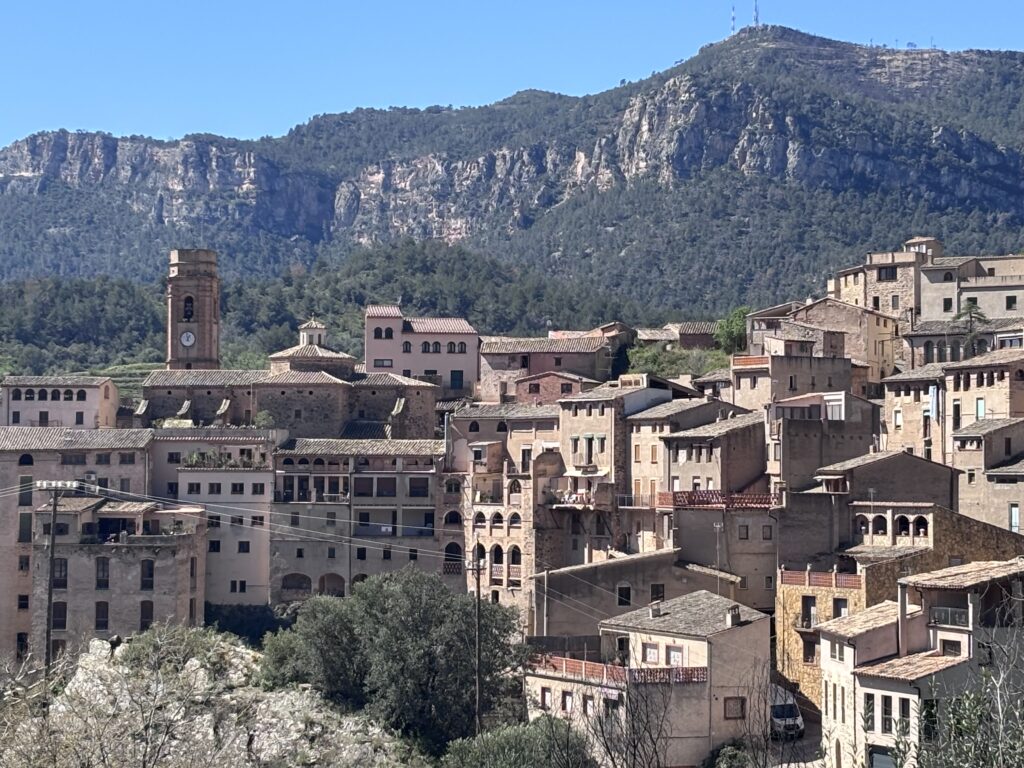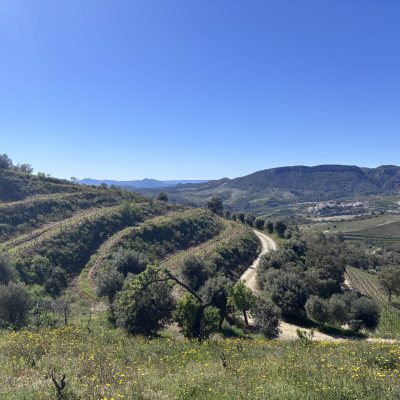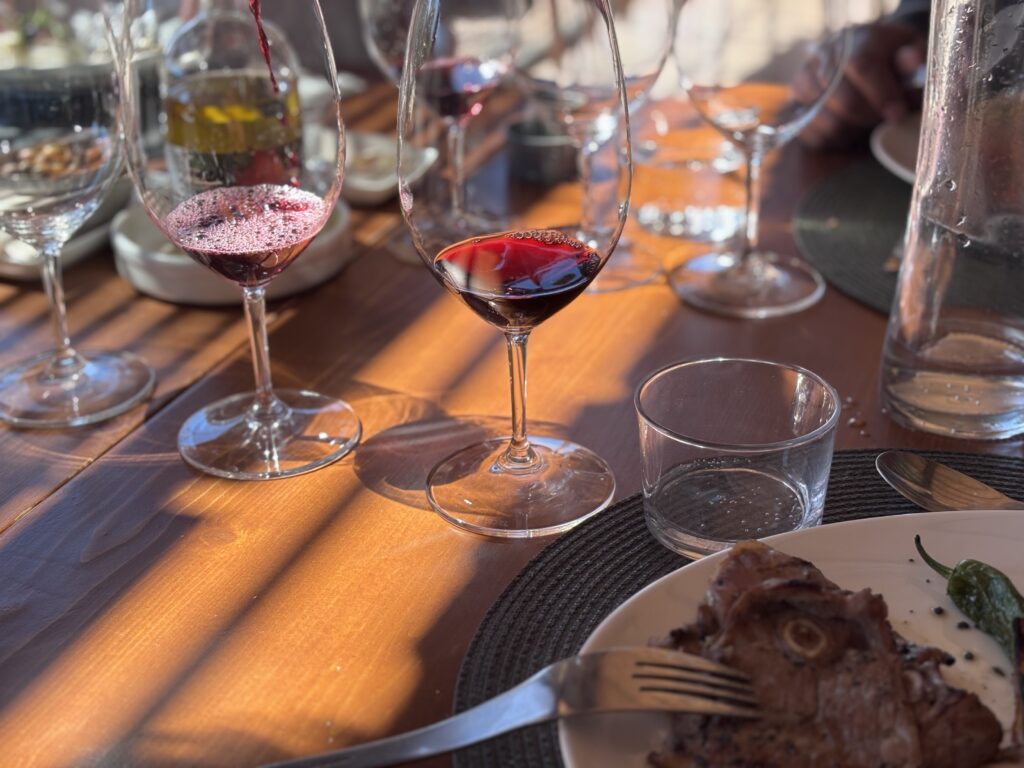How to visit Priorat; a wine lover's guide

The breathtaking wine region of Priorat, tucked away in the rugged mountains southwest of Barcelona, Spain, is a must-visit for both seasoned wine lovers and curious newcomers. Its dramatic landscape, framed by the imposing Montsant mountain range, creates an almost otherworldly charm while acting as a natural barrier that keeps the region remarkably dry. After a quiet off-season trip to Menorca—where March felt like a ghost town—a quick 30-minute Vueling flight landed me in bustling Barcelona. Priorat is a dream destination for sommeliers and wine enthusiasts alike, and on an unseasonably warm spring morning, accompanied by the ever-knowledgeable Ivan from Wino Tours, we began our journey into this legendary region. But first, let’s set the scene…

Priorat – the gem of the Mediterranean
Priorat is located in a remote and hilly part of Catalonia, with vineyards planted on steep slopes at altitudes ranging from 100 to 700 metres above sea level. These steep inclines, known as costers, require vines to be planted on narrow terraces, making mechanized farming nearly impossible. As a result, viticulture in Priorat is highly labour-intensive, with grapes often hand-harvested to ensure the best quality.
One of Priorat’s most remarkable features is its unique soil, known as llicorella—a type of brittle, slate-like rock mixed with quartz. This poor, rocky soil forces vines to extend their roots deep into the ground in search of water and nutrients, resulting in low yields but highly concentrated grapes. Llicorella also retains heat during the day and releases it slowly at night, aiding the ripening process and contributing to the wines’ depth and minerality.
Priorat’s unique climate
Priorat experiences a warm Mediterranean climate, characterised by hot, dry summers and cool nights due to its elevation. This significant difference between daytime and nighttime temperatures helps grapes retain acidity while developing rich, ripe flavours. With long hours of sunshine and limited rainfall, the vines produce small, intensely flavoured berries, resulting in wines with deep colour, firm tannins, and exceptional ageing potential.
Priorat’s rugged landscape and distinctive soil composition give its wines their characteristic power and complexity. The region’s red wines—primarily made from Garnacha (Grenache) and Cariñena (Carignan)—are known for their deep colour, intense fruit flavours, pronounced minerality, and structured tannins. These wines often display notes of dark berries, liquorice, graphite, and spice, with remarkable freshness and a long finish.
In essence, Priorat’s challenging yet rewarding terrain is what makes its wines so extraordinary. Every bottle reflects the land’s unique character, the resilience of the vines, and the dedication of the winemakers who bring them to life.
A rich history
Priorat’s rise to fame is a story of revival and dedication. Once a forgotten region, it was revitalised in the 1980s and 1990s by a group of pioneering winemakers, including René Barbier, Álvaro Palacios, and Daphne Glorian. Recognising the potential of Priorat’s unique soils and old vines, they introduced modern winemaking techniques while respecting traditional methods. Their bold, intensely flavoured wines quickly gained international recognition, with critics praising their depth, structure, and ageing potential.
In 2000, Priorat was awarded Spain’s highest wine classification, DOCa (Denominación de Origen Calificada), joining Rioja as one of only two regions with this prestigious status. This distinction, combined with growing global appreciation for high-quality, terroir-driven wines, cemented Priorat’s reputation as one of the world’s most exciting and sought-after wine regions.

Best Wineries to Visit in Priorat
On my tour, I visited three standout wineries that showcased the depth and character of Priorat wines:
1. Scala Dei
Scala Dei is one of the most historic wineries in Priorat, tracing its origins back to the 12th-century Carthusian monks who first planted vines in the region. The tour included a walk through their old cellars and vineyards, followed by a tasting of their rich and mineral-driven wines. If you love history and bold reds, this is a must-visit.
2. Clos Figueres
Next was Clos Figueres, a charming boutique winery in the heart of Priorat. Here, I enjoyed a guided tasting featuring elegant and complex wines, paired with a delicious lunch made from local ingredients. Their restaurant is a fantastic place to enjoy a leisurely meal while soaking in the stunning vineyard views.
3. Devinssi Winery
The final stop was Devinssi, a small artisanal winery known for its hands-on approach to winemaking. I had the chance to explore their vineyards, learn about traditional winemaking methods, and taste some of their limited-production wines. This intimate experience was the perfect way to end the day.

Tips for Visiting Priorat
- Book in advance: Many wineries require reservations, especially for guided tours and tastings.
- Wear comfortable shoes: Some tours include walking through vineyards, which can be hilly and uneven.
- Plan for a full-day trip: With travel time included, you’ll want to dedicate an entire day to fully enjoy the region.
- Consider a guided tour: Private tours like Wino Tours offer the advantage of local expertise, convenience, and no need for a designated driver!
